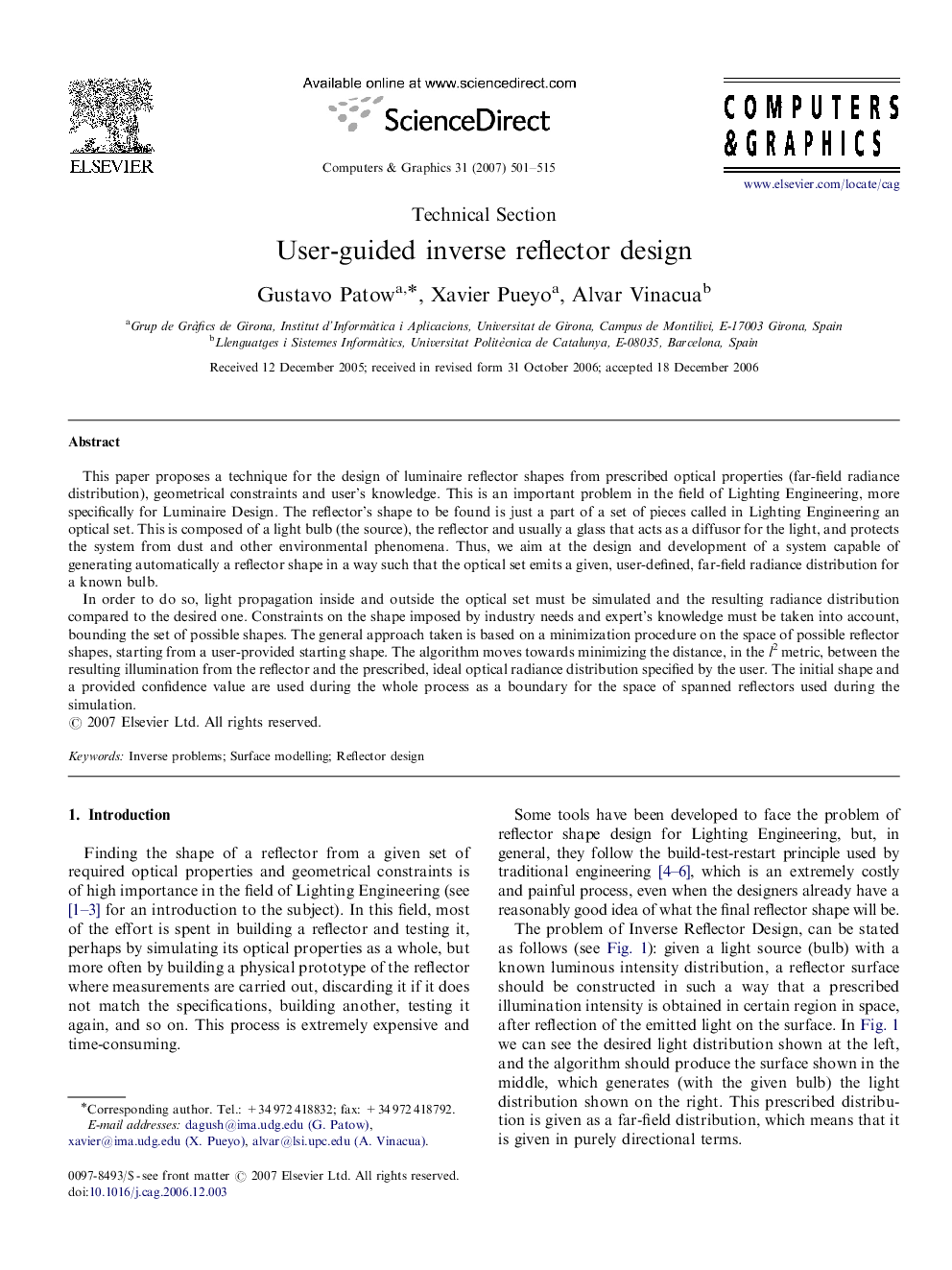| Article ID | Journal | Published Year | Pages | File Type |
|---|---|---|---|---|
| 442249 | Computers & Graphics | 2007 | 15 Pages |
This paper proposes a technique for the design of luminaire reflector shapes from prescribed optical properties (far-field radiance distribution), geometrical constraints and user's knowledge. This is an important problem in the field of Lighting Engineering, more specifically for Luminaire Design. The reflector's shape to be found is just a part of a set of pieces called in Lighting Engineering an optical set. This is composed of a light bulb (the source), the reflector and usually a glass that acts as a diffusor for the light, and protects the system from dust and other environmental phenomena. Thus, we aim at the design and development of a system capable of generating automatically a reflector shape in a way such that the optical set emits a given, user-defined, far-field radiance distribution for a known bulb.In order to do so, light propagation inside and outside the optical set must be simulated and the resulting radiance distribution compared to the desired one. Constraints on the shape imposed by industry needs and expert's knowledge must be taken into account, bounding the set of possible shapes. The general approach taken is based on a minimization procedure on the space of possible reflector shapes, starting from a user-provided starting shape. The algorithm moves towards minimizing the distance, in the l2 metric, between the resulting illumination from the reflector and the prescribed, ideal optical radiance distribution specified by the user. The initial shape and a provided confidence value are used during the whole process as a boundary for the space of spanned reflectors used during the simulation.
